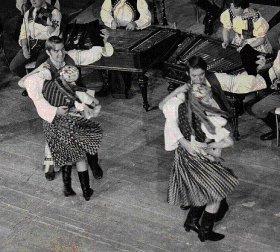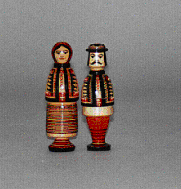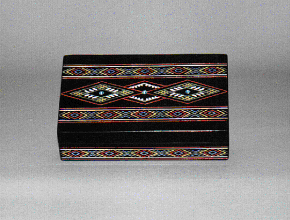
Ukrainian-Canadians are one of the best known ethnic groups on the Canadian prairies. This is hardly surprising when it is noted that from 1896 to 1914 over 200,000 Ukrainians came to Canada. Most of these new immigrants were farmers who were eager to settle on the newly-opened farmland of the western Prairies. The largest settlement of Ukrainians in Alberta was in the northern part of the province, but many of these immigrants also came to Lethbridge and southern Alberta. The first Ukrainians to arrive in Lethbridge came not as farmers, but as railway workers in the 1890's. A large number of them also began to find work in the coal mines around Lethbridge. Many of them held two jobs; working a coal miners and as farm laborers. In the decades that followed, some of these men began to farm for themselves in places around southern Alberta. It is difficult to know how many Ukrainians were actually in the area because many of them were classified as Hungarians, Poles, or Russians by government officials, but it is safe to say that by 1920 there were well over 400 Ukrainians working in the mines and on the farms of southern Alberta.

P1976022009-GP Traditional Ukrainian dance group performs at the Yates Center.
World War I brought great changes for Ukrainians in Lethbridge. The Ukraine was an Austrian province at the start of World War I, and Ukrainian-Canadians were often thought of as the enemy within Canada. Appeals for citizenship by Ukrainians trying to become Canadian citizens were stopped, and some of them were even interned for a time. In addition, the Wartimes Election Act took away the right of Ukrainian-Canadians to vote. These measures had some unexpected consequences. Ukrainian farmers got richer because land prices rose during the war, and since Ukrainian men had not been sent to war they were able to stay at work on their farms. Among Ukrainian mine workers, the poor treatment that they received during the war served to make them more politically radical. Support for organizations like the International Workers of the World (I.W.W.) and One Big Union (O.B.U.) became quite strong among Ukrainian mine workers.

P1974007000-GA Traditional Ukrainian Easter Egg sent to Lethbridge from Poland around 1970.
Following World War I there was another large wave of Ukrainians coming to Canada, although it does not seem that a great deal of them came to southern Alberta. Of the less than 100 who did, most of them found work in the local sugar beet fields, sometimes working for Ukrainians who already owned their own farms. By 1941 there were over 800 Ukrainians in Lethbridge and 1900 Ukrainians in southern Alberta. The end of World War II brought another wave of Ukrainians to Lethbridge. Not very many of these immigrants remained in the area very long. Most of them left seeking work in larger cities. But, by 1961, the few post-World War II Ukrainian immigrants who stayed brought the Ukrainian population in Lethbridge to over 1300.

A traditional shirt worn by Ukrainian men.
Ukrainians in western Canada have always had an exciting religious and cultural life. Most of the Ukrainians who came to Lethbridge were either Ukrainian Orthodox or Ukrainian Catholic. By 1900 the Russian Orthodox priest, Father Jacob Korchinsky was working with Ukrainian coal-miners living in Lethbridge. Meanwhile, Catholic priests, including Father Van Tighem, dealt with the Ukrainian Catholics (among many others) during those early years. Later, in 1922, St. Peter and St. Paul’s Catholic Church was established just for Eastern European Catholics. Four years earlier, a separate Ukrainian Greek Orthodox Church was established in 1918. It attracted many Ukrainians from both the Russian Orthodox and the Roman Catholic Church and, at one time, it had two large churches within the city.

P19738270000-GA Hand Painted Ukrainian dolls.
In addition to their churches, the Ukrainian community in Lethbridge has expressed itself in a variety of other ways. The Ukrainian community is well-known for its dancing which is still done in Lethbridge. Ukrainians also have unique clothing and furniture, some of which has been preserved at the Sir Alexander Galt Museum. Finally, their beautifully painted Easter eggs are a treasure of the Ukrainian community. It is clear then that Ukrainian community, apart from being an important part of the development of Lethbridge, has enriched the culture of southern Alberta in a great way.

P19820061000-GA Hand decorated Ukrainian jewelry box.
Previous Page | Exhibit Contents | Home | Navigation Information | Glossary | Curriculum Guide | Next Page
Copyright © 1996 Sir Alexander Galt Museum. All rights reserved.